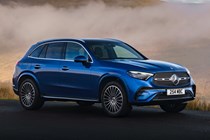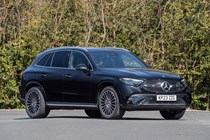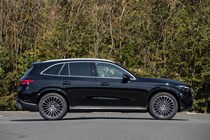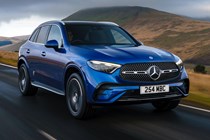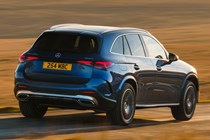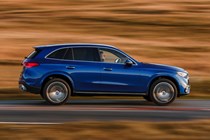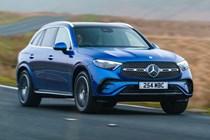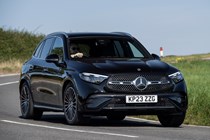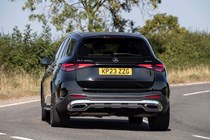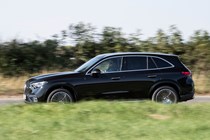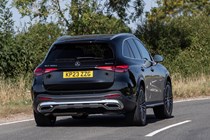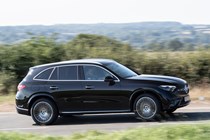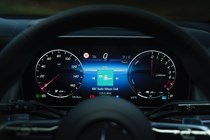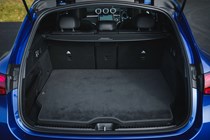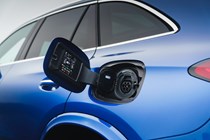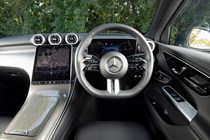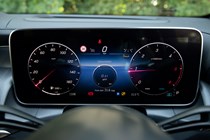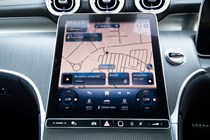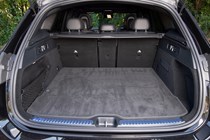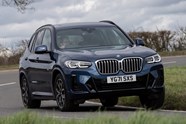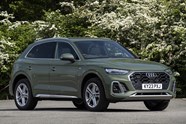
Mercedes-Benz GLC review
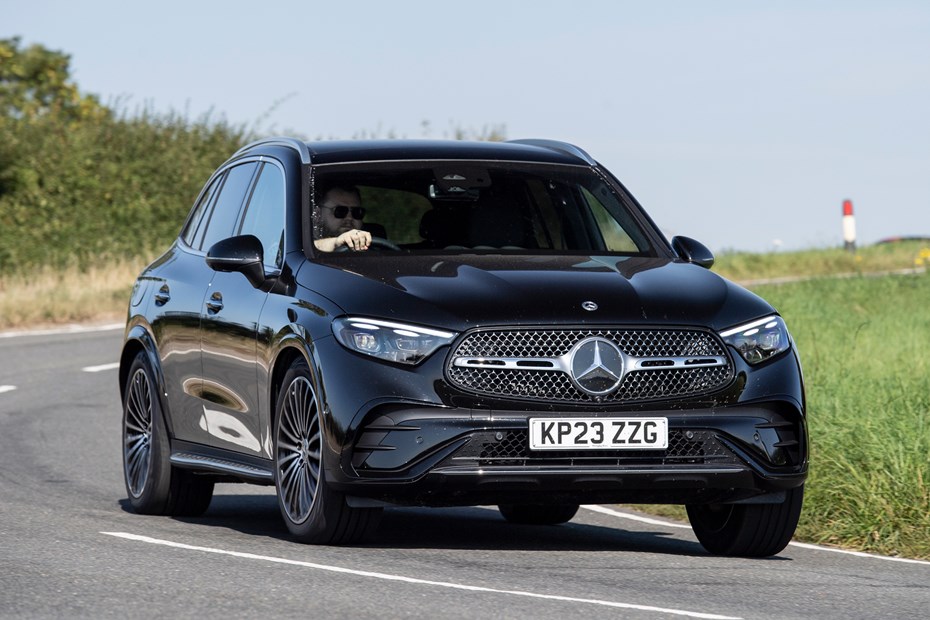
At a glance
| Price new | £53,995 - £75,720 |
|---|---|
| Used prices | £31,735 - £59,438 |
| Road tax cost | £620 |
| Insurance group | 40 - 50 |
Get an insurance quote with

|
|
| Fuel economy | 35.3 - 53.3 mpg |
| Miles per pound | 5.2 - 6.8 |
| Number of doors | 5 |
| View full specs for a specific version | |
Available fuel types
Petrol
Diesel
Hybrid
Pros & cons
- PHEV has long electric range
- Clever infotainment system
- Comfortable at high speeds
- Less composed in town
- Price – it starts at £53,000!
- Lifeless steering system
Mercedes-Benz GLC SUV rivals
Overview
Forget luxury saloons and cutting-edge electric cars. The best-selling vehicle in Mercedes-Benz’s arsenal is the GLC SUV – and it’s easy to see why. It parcels the firm’s clever infotainment equipment, impressive plug-in hybrid technology and upmarket image into a fashionable bodyshell that can turn its hand to family duties. But is it good enough to be one of the best SUVs on sale?
Well, the Mercedes GLC sits in a segment of talented rivals with different (arguably more attractive) strengths. For example, the BMW X3 offers a more focused driving experience that will likely appeal to those stepping out of a saloon car. The Land Rover Discovery Sport, meanwhile, is infinitely more capable off-road and it features seating for seven.
Mercedes is positioning the GLC as more of a comfortable long-distance cruiser than a B-road barnstormer or a bush-bashing off-roader, which makes it more of a direct rival to the Audi Q5. The car’s engine range reflects this decision – they’re all efficient turbocharged four-cylinder units, mated to nine-speed automatic gearboxes and assisted by varying degrees of electrification.
There are five engines to choose from – two petrols and three diesels. The petrol range opens with the GLC 300 mild hybrid, which produces 258hp and can sprint from 0–62mph in 8.0 seconds. Above that, there’s the GLC 300 e plug-in hybrid. It pairs a slightly less powerful version of the 300’s petrol engine with a 31.2kWh battery pack and a 136hp electric motor mounted on the rear axle. That boosts the GLC’s output to 313hp and slashes its 0–62mph time down to 6.7 seconds.
The cheapest GLC diesel you can have is the 220 d with 197hp, above which sits the 269hp GLC 300 d. Both these engines also feature mild hybrid assistance. At the top of the range, there’s the unique GLC 300 de which, if you hadn’t already guessed, is a plug-in hybrid diesel powertrain.
It features the engine from the 220 d, but the motor and battery pack from the 300 e to provide a combined output of 333hp and a comical official fuel economy figure of more than 700mpg. Spoiler alert, you’ll never achieve that in the real world. We’ll elaborate on why later in this review. There are also a pair of hot AMG GLCs that you can read about in a separate review.
Mercedes kept the GLC’s trim range simple, offering just three specifications called AMG Line, AMG Line Premium and AMG Line Premium Plus. The most basic car comes as standard with 19-inch alloy wheels, LED headlights, privacy glass, an 11.9-inch infotainment system and a digital gauge cluster.
Mid-range AMG Line Premium cars get some extra equipment, such as 20-inch alloys, adaptive headlights and additional driver assistance technology, such as blind spot assist and a traffic sign recognition system. The range-topping AMG Line Premium Plus model features a panoramic sunroof, a 360-degree parking camera and a booming Burmester stereo system. All this equipment doesn’t come cheap, though. You’ll spend more than £75,000 on the top-spec 300 de.
Over the next few pages, we’ll assess each aspect of the Mercedes GLC and let you know whether it’s worth buying over its rivals. We’ve driven most versions of the GLC now, giving us a broad impression of the range as a whole. You can read more about how we test cars at Parkers elsewhere.
Our review will explore the car’s practicality, interior quality, technology, driving experience and running costs. We’ll then offer our final verdict. Click through to the next page to learn more.




